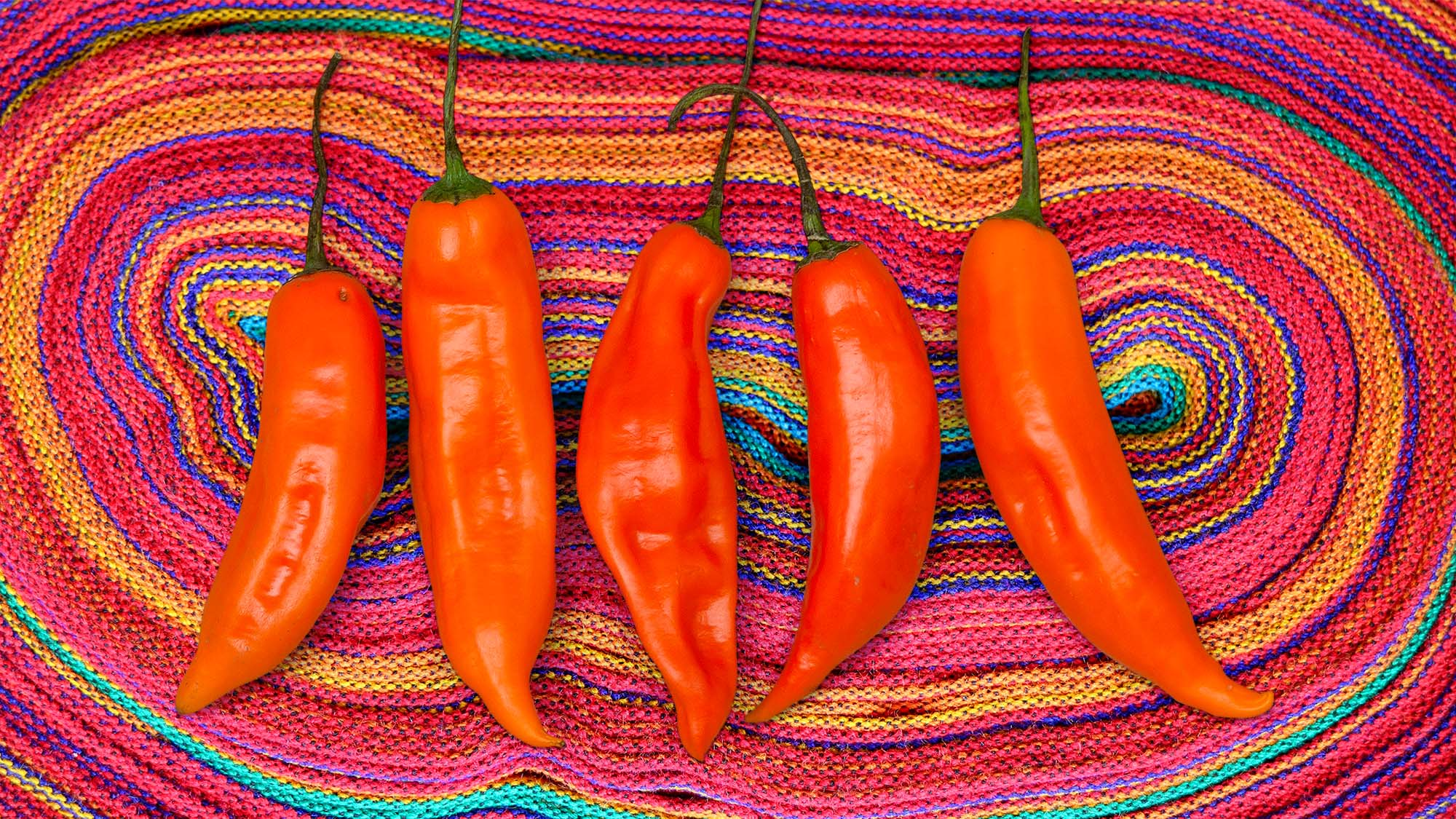Adventures In Cooking With The Rare Aji Amarillo
About a year ago during an interview, Peruvian born chef Ricardo Zarate told me, "I want to take down the Italians." He was being playful, of course, and I immediately burst out laughing at his declaration of war, but it's important to note that he did pound the table with his fist as he made this statement. Make no mistake, Ricardo does in fact want to dethrone Italian cuisine in the United States. He wants to usurp its firm position in Americans' hearts, and if he is to do that, he's going to need fresh aji amarillo.
Ricardo's passion for Peruvian food is boundless; he's a champion of it, and he isn't the only one. Good, then, because there are many obstacles in executing authentic Peruvian cuisine in the United States. Peru has three different climate zones: Coastal, the Amazon, and the Andes. Lima, the coastal climate where Ricardo is from, is technically a subtropical desert. Lima sees very little rain, even though the sky is consistently overcast. I'm looking at the weather for this week in the city, and the highs are all 70 with lows of 60. The temperature just doesn't change much. Moreover, the Humboldt Current constantly pushes cold, low-salinity water toward its shores, so the ocean water never gets too warm. Needless to say, what grows in the coastal climate of Peru doesn't necessarily translate to the U.S.

Take their staple pepper, a building block of their cuisine, the aforementioned aji amarillo. It is fundamental to Peruvian cooking, a part of the "holy trinity" of ingredients (which I've heard debated, but I am to believe that it's red onion, aji amarillo, and garlic, though one could argue huacatay, or black mint). Fresh aji amarillo possesses phenomenal flavor. It's got an initial fruity, sweet bite to it, crunchy in the way that only a fresh pepper can be. There's a mellow heat to it, too, but it dissipates quickly. It registers between 30,000 and 50,000 on the Scoville Heat Unit Scale. It's comparable to a serrano, which registers between 10,000-23,000 SHU. Still, the aji amarillo's flavor feels more balanced, though, making it ubiquitous in Peruvian cooking. It has the ability to elevate ceviche instantly. It transforms saltado, and pairs well with just about any protein or vegetable. Currently, the aji amarillo is a rare and fleeting experience for Americans, because it just isn't being grown commercially in the States. Enter Javier Van Oort, an advocate of the pepper who grows it on his home terrace in Laguna Nigel, California.
Javier himself acquired the pepper seeds from his mother, who traveled from Peru to Orange County about 20 years ago with some aji seeds. "An accident," he says, smiling. Since then, Javier has made it his mission to grow the seeds. It just so happens that Laguna Nigel is the perfect climate for ajis. It's just cool enough, being about four miles inland from the beach, but the area still maintains its dry desert air. Javier's got about 120 plants in his backyard, which he supplies to chef Ricardo Zarate and a few other restaurants in California. It's a godsend to chefs who can only get their hands on frozen peppers or aji paste. The difference is stark: "Anything frozen is going to lose its flavor. The texture's going to be different. It's not going to be as vibrant," Javier says. For him, there is no substitute for fresh aji amarillo.
Javier is willing to send the peppers to anybody who appreciates them, and that includes bonehead food writers. I set out to make a Peruvian green sauce with my stash of peppers. This is a versatile, flavorful condiment that can accompany any protein or vegetable, and according to Javier, "Everyone makes it different." Some notes on the recipe: I wish I had some huacatay, but I forgot to ask Javier for some. It would have been another ingredient to elevate this dish and I'm kicking myself. Fresh aji amarillo can be substituted with some aji paste, or a few serrano peppers. Of course it won't be the same thing, but the framework for this sauce is still delicious. Most recipes online call for mayonnaise, and I love mayo, but it felt wrong to use something as processed as mayo with these peppers. The whole thing is interchangeable, but this combination below produced one of my favorite sauces to date.
Javier tells me it's just a matter of time before somebody grows the peppers commercially. It won't be him—he's a lawyer—but if anybody wants to get rich, hop in my DMs.

Aji Verde (Peruvian Green Sauce)
Can be served with any protein or vegetable
- ½ large red onion, diced
- 2 limes
- 2 cups cilantro
- ½ cup mint (or huacatay if you can find it)
- 2 cloves garlic, crushed
- 6 aji amarillo (substitute 2 tablespoons aji amarillo paste, or use a few serrano peppers)
- 1 egg yolk
- ½ cup olive oil
Place the diced red onion into a bowl and squeeze the 2 limes over it. Stir and let sit for 20 minutes. The goal here is to cut some of the harshness of the onion with the lime juice, while still getting some of that red onion flavor.
If using fresh peppers, chop them coarsely and include the seeds and all.
In a food processor or blender, add the cilantro, mint, garlic, red onion mixture, and aji amarillo (or serrano, or aji paste). Pulse until coarse, scraping the sides of the food processor to make sure it's evenly mixed.
Next, add the egg yolk and blend while slowly pouring in the olive oil. Salt and pepper to taste. Garnish with more mint.
